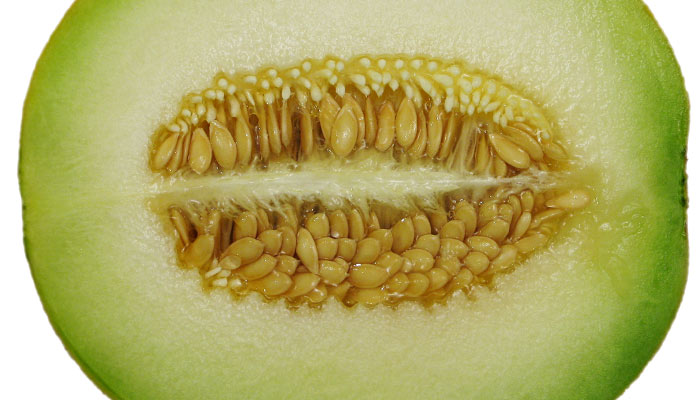 As a member of the curbitaceae family, honeydew melons are a relative of cucumbers and squash. It is thought that honeydews originated in Persia. Honeydew melon is present in Egyptian hieroglyphics dating as far back as 2,400 B.C.E., and was a prized as a food. Later cultivated by the Romans, honeydew were introduced to Europe during the rise of the Roman Empire. They did not gain popularity, however, until becoming a trend in the French royal court during the 15th century. Columbus carried honeydew melon seeds with him to America, as did Spanish explorers settling California. Today, most of America’s honeydew is still grown in California.
As a member of the curbitaceae family, honeydew melons are a relative of cucumbers and squash. It is thought that honeydews originated in Persia. Honeydew melon is present in Egyptian hieroglyphics dating as far back as 2,400 B.C.E., and was a prized as a food. Later cultivated by the Romans, honeydew were introduced to Europe during the rise of the Roman Empire. They did not gain popularity, however, until becoming a trend in the French royal court during the 15th century. Columbus carried honeydew melon seeds with him to America, as did Spanish explorers settling California. Today, most of America’s honeydew is still grown in California.
Nutritional Highlights:
- Honeydew melon is only 60 calories per cup, and is composed of about 90% water.
- It is a good source of vitamin C and has potassium content comparable to that of a banana, with fewer calories.
- Honeydew is also a source of B vitamins thiamine, niacin, pantothenic acid, as well as the trace mineral copper.
Health Benefits:
- The combination of its high water content and potassium levels make honeydew melon effective at maintaining healthy blood pressure levels.
- As honeydew contains both vitamin C and copper, they promote healthy skin by aiding collagen production and tissue repair.
Honeydew’s sweet and mild flavor allows it to be combined with almost any other fruit. Mix it with pineapple, banana, kiwi, and berries for a yummy fruit salad. For a more savory application, toss diced honeydew with lemon, watercress, lime, cilantro and jicama for a Mexican inspired dish. For a refreshing breakfast, use half a honeydew as an edible bowl for yogurt or even cottage cheese. For more preparation tips, check out a copy of my “Encyclopedia of Healing Facts”.


